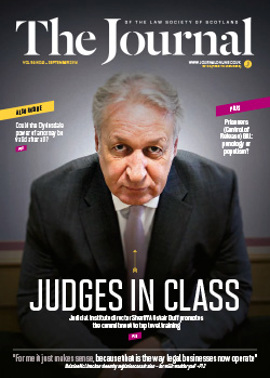Shopping with protection

In Apple Inc v Deutsches Patent-und Markenamt (C-421/13), the Court of Justice of the European Union (“CJEU”) recently issued a decision confirming that layouts of retail stores can be protected by trade marks in certain circumstances. The judgment demonstrates that trade mark protection can extend beyond logos and brand names, and can cover a variety of unique and distinctive signs employed by businesses to set them apart from competitors.
In 2010 in the United States, technology giant Apple was granted a trade mark for a three-dimensional mark consisting of a multi-coloured design representation of its flagship retail store. The trade mark was registered in relation to various retail store services, including those featuring computers, computer software, consumer electronics and demonstrations of such products.
Apple then sought registration of this trade mark in various countries worldwide. This was initially refused by the German Patent and Trade Mark Office (DPMA). Apple appealed to the German Bundespatentgericht, which referred a number of questions to the CJEU, essentially aimed at establishing whether, in principle, a shop layout could be registered as a trade mark under the Trade Marks Directive (2008/95), which harmonises national trade mark law throughout the EU.
Criteria
Article 2 of the directive provides that three conditions must be satisfied before a sign can be considered for registered trade mark protection:
- The mark must constitute a sign.
- The sign must be capable of being represented graphically. The directive gives examples including words, numerals, the shape of goods or their packaging, and designs. This list is not exhaustive. For example, colours and excerpts of musical works can also be represented graphically and have been registered as trade marks.
- The sign must distinguish the goods or services of one undertaking from those of another.
Article 3 sets out various grounds for refusing an application, including:
- The trade mark is devoid of distinctive character.
- The mark is descriptive, i.e. it consists exclusively of descriptions of characteristics of the goods/services.
- The trade mark is generic, i.e. it consists exclusively of signs or indications which have become customary in the trade.
Principles
The CJEU noted that article 2 specifically stated that designs were signs capable of graphic representation. As such, it followed that a representation depicting the layout of a retail store could constitute a trade mark, because it met the first two tests in article 2.
To be registered, it would also need to meet the third test in article 2: distinctive character. In other words, Apple would need to show that its shop layout was capable of distinguishing its goods/services from those of other undertakings.
The CJEU considered that a shop layout could have distinctive character in principle, if the depicted layout departed significantly from the norm or customs of that sector. Whether the Apple shop layout does is a question of fact for the German court to decide. The CJEU advised that in making this decision, the German court should apply the criteria set out in existing case law and assess the sign with reference to the goods or services in question, and the perception of the average consumer of those goods and services. It should also consider potential applicability of the
article 3 refusal criteria.
Crucially, the CJEU held that the German court must not apply different assessment criteria to Apple’s trade mark simply because it was a design representing the layout of a retail store. The usual trade mark law tests should apply. Further, it was not necessary for Apple to include sizes and dimensions in its design for it to be capable of protection.
Finally, the CJEU considered the category of services to be covered by the trade mark, and confirmed that, in principle, trade marks could be registered in respect of services aimed at inducing consumers to purchase products, such as in-store demonstrations and seminars, as these fall within the scope of “services” in the directive.
Implications
The CJEU’s decision clarifies beyond doubt that a design representing a retail store layout can be protected as a registered trade mark. This is good news for retailers as well as food and drink businesses, who create distinctive environments and layouts to attract customers. The ability to obtain trade marks for distinctive layouts will help businesses in the fight against copycat competitors. This decision underlines the flexibility of trade mark protection, and the ways in which businesses can use it to their advantage.
In this issue
- Keep the job going?
- Asbestos and the state of knowledge
- Damned lies and bogus statistics
- Sorry seems to be the hardest word
- With a fair RWIND
- Planning land reform: the land of Scotland and the common good
- Reading for pleasure
- Opinion: Joanne Gosney
- Book reviews
- Profile
- President's column
- Roadshows roll out
- People on the move
- Outcomes, or own goals?
- Power and authority
- Licensed to reoffend?
- Raising the bar for the bench
- Title insurance – under the bonnet
- Working for Uncle Sam
- Family failings
- Shopping with protection
- Private sector progress at public sector expense?
- Rent review: the storm before the calm
- Doping: raising the stakes
- New financial services arm for ILG
- Under starter's orders
- Childcare: the benefits
- Law reform roundup
- Follow the leader
- Five years from when?
- Ask Ash
- Take the money?
- From the Brussels office
- Beware the bank calls
- Mentoring – why?






